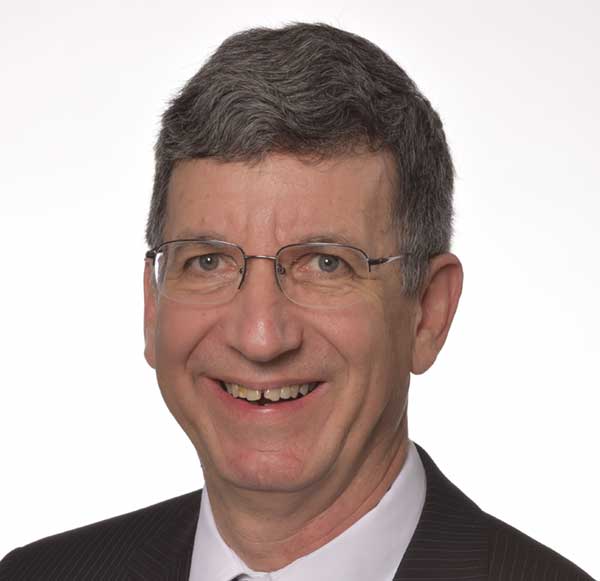
Viral Vector Manufacturing
Company: MilliporeSigma
Job Title: Head of Technical Operations, Viral and Gene Therapy Manufacturing
Viral vector manufacturing is a critical part of most gene therapy and gene-modified cell therapy production processes. The Lentiviral vector is a commonly used vector for CAR T gene-modified cell therapies and has been key in the advancement of these therapies. In addition, Lentiviral vectors are also used in gene therapies to treat several genetic diseases.
With the importance of these vectors to production, there has been a need to improve manufacturing processes. Areas for improvement include stable cell line development, scalability, upstream and downstream process optimization, and ensuring that a production process is ready for gene therapy commercialization. It is great to have expert help to navigate these opportunities for process improvement. For this Ask the Expert Session, we assembled a team of experts to answer questions on viral vector manufacturing and process improvement.
Areas for further exploration include:
- Cell line development for lentiviral vector production
- Upstream process development for lentiviral vector manufacturing
- Scale-up of upstream processes into single-use bioreactors
- Downstream process optimization for lentiviral vectors
- Preparing for commercialization of a vector production process
Meet our Experts
 Lisa Freeman-Cook, Head of Technical Operations, Viral and Gene Therapy Manufacturing, MilliporeSigma
Lisa Freeman-Cook, Head of Technical Operations, Viral and Gene Therapy Manufacturing, MilliporeSigma
Dr. Lisa Freeman-Cook is the Head of Technical Operations at Millipore Sigma’s Viral and Gene Therapy Manufacturing site in Carlsbad, California. She received her BA degree in biology from Carleton College in Northfield, MN. Lisa earned a Ph.D. from the University of Colorado Boulder in the laboratory of Dr. Lorraine Pillus, where she studied chromatin structure and epigenetic gene regulation. She continued her training at Yale as a Postdoctoral Fellow in the laboratory of Daniel DiMaio, where her research interests focused on papillomavirus oncogenes. She then worked at Invitrogen and Life Technologies (now Thermo Fisher Scientific) managing contract services, manufacturing, and R&D for the human protein microarray business. Lisa then moved to GenMark Diagnostics, where she managed assay development and technical operations, developing a sample-to-answer platform and four FDA-cleared molecular diagnostic assays as the Vice President of Assay Development. Currently, Dr. Freeman-Cook is leading process development, technology transfer, technical failure investigation, and validation engineering efforts for MilliporeSigma’s viral vector and gene therapy contract manufacturing business.
 Henry J. George, Head, Viral Vector Producing Cell Lines, Gene Editing and Novel Modalities R&D, Process Solutions R&D, MilliporeSigma
Henry J. George, Head, Viral Vector Producing Cell Lines, Gene Editing and Novel Modalities R&D, Process Solutions R&D, MilliporeSigma
Henry (Hank) George brings expertise in research and product development through professional experience in small biotechnology and large pharmaceutical industries.
Henry received his B.A. degree in biology from Southern Illinois University at Edwardsville in 1976 and performed graduate studies in genetics at Florida State University and biochemistry at St. Louis University. Since 1981, Henry has worked in the biotechnology and pharmaceutical sectors, developing recombinant protein expression systems in bacterial, insect, and mammalian hosts. In 1981, he joined Molecular Genetics, Inc. (Minnetonka, MN), an early biotechnology leader, developing bacterial expression systems to produce recombinant proteins for agricultural uses (e.g., animal vaccines and animal growth hormones). In 1988, he joined R&D Systems, Inc (Mpls, MN), a present-day leader in the development and manufacturing of research reagents, forming a gene expression group responsible for producing various mammalian cytokines in bacterial and insect systems. His group generated many of the initial products currently marketed by R&D. From 1990 through early 2001, and he was with the DuPont Pharmaceuticals Company (now part of Bristol Myers Squibb Company, Wilmington DE) as a Principal Investigator. His laboratory efforts at DuPont continued to focus on developing and using high-level expression systems for the production (analytical and large scale) of pharmaceutically essential proteins. In early 2001, he joined Sigma-Aldrich Company as an R&D manager developing products such as the FLAG® protein expression system and the Mission™ lentiviral-based shRNA libraries for gene silencing human and mouse genes. In 2010, he joined Sigma’s SAFC Division as Manager of Cell Sciences and Development (CSD) group. He led a team that developed an improved and novel CHO cell line (CHOZN) for the monoclonal antibody production platform via Sigma’s CompoZr™ ZFN technologies.
In 2016, he joined the Gene Editing and Novel Modalities R&D group within MilliporeSigma to lead a new team (Viral Vector Producing Cell Lines), focusing on improving the production systems and bioprocesses for viral vector manufacturing for gene therapy applications. That team has developed a novel suspension cell-based production platform (Virus Express™) for the large-scale manufacturing of r-lentiviral vectors.
Henry’s research experience covers a multitude of scientific disciplines, including molecular biology, gene expression, cell biology, virology, and protein chemistry. His work has resulted in publications in journals such as Science, Proceedings of the National Academy of Science, Journal of Biological Chemistry, Biochemistry, and DNA.
Question 1
What are your thoughts on adherent vs. suspension for lentiviral manufacturing?
Certainly, growing cells in adherent cultures has many limitations, mainly around the scalability of such systems, as all rely on surface area of the culture matrix. Therefore, only a scale-out process can be performed to get to larger and larger scales, requiring larger production space, equipment, etc. Another liability of adherent system is the use of undefined mediums and use of animal serum/components to grow the cells. These reagent have the increase chance of introducing adventitious agents into the product and workflow. Suspension growth processes are a true “scale up “ process that can take advantage of the growth of cells in various scale bioreactor system, allowing the production process to mirror the production processes established by monoclonal antibody industry. The cells can also be grown in animal component free and chemically defined media which will reduce the chance of introduction of a contaminant.
Question 2
Do you see suspension reaching a point soon where the specific productivity is better than adherent systems?
I think we’re already there. Our VirusExpress Lentivirus Production platform has been shown to outperform adherent systems (by as much as 5x) with regards to overall titer and specific productivity. Future enhancements such as the optimization of transfection process, the introduction of better transfection reagents, and improved parameters used for the growth of cells, will continue to improve the overall productivity.
Question 3
We are considering moving to a stable cell line for our lentiviral production, do you have advice on transfection vs. producer cell line?
While we see the future of LV manufacturing is moving towards the use of a stable cell lines, mainly due to reduction of costs of reagents required for the plasmid/transfection methods currently being used, the length of time (>1 year) to develop such lines and the lower productivity of such systems are the main current hurdles. Transfection based manufacturing process allows one to develop and manufacture in a few weeks time allowing one to test and get their therapeutic product into the pre-clinical and clinical environment much quicker.
Question 4
What is the most efficient method for developing a stable cell line for lentiviral production?
The delivery of viral gene expression constructs into the cells, their respective integration and selection of high producers are relatively difficult and time consuming (again > 1year) at this time in which groups have to screen hundreds if not thousands of clones that produce the LV particle at titers that would be manufacturing and commercially useful. Unlike the use of Mab clones which are driven by constituitive promoters to drive transcription of the IgG genes, several of the viral genes are toxic to the producer cells, therefore requiring the use of inducible promoter systems in order to control the production of these toxic proteins in the cells.
Question 5
In thinking about moving a lenti process from adherent to suspension, how do you manage shear concerns?
It comes down to selecting a cell line and media combination that has been adapted for growing under suspension conditions. This may take the cloning and screening of some several hundred clones followed by screen such clones for growth and productivity attributes. Typically one adds reagents such as Pluronic F-68 to the media to minimize shear, but one has to balance the effect of PF68 as such can affect the transfection capability when using an all plasmid production approach. Our VirusExpress cell line and media was developed to grow well under suspension conditions from small scale shaker flasks to large scale bioreactors.
Question 6
There are several articles investigating the use of baculovirus vectors for LV production in suspension lines. What do you think about this approach?
While we’ve heard of using such for AAV production, we’ve not seen anyone using insect cells for LV production. As both LV and baculovirus produce budded viruses, I would think using such for LV production would result in low titers (if any) due to competition of cellular secretion and assembly factors. For AAV production, the use of insect cells is well documented with several therapeutic AAV’s now in the clinic. The insect cell system has the advantages of being able to grow cells in suspension culture and no need to produce costly plasmids or use transient transfection reagents. However, one now has to demonstrate removal of the large baculoviruses that were used to infect the culture (though size exclusion is relatively straightforward) and there have been some reports of post translational modifications and differences of the capsids can result in different transduction efficiencies when applied to target cells/organs.
Question 7
Our process has an issue with stability and yield loss during production. We were thinking about ways to reduce hold times and/or moving to perfusion. Wanted to get your thoughts.
LV particles, being budded retrovirus, are known to be relatively “fragile” and not very environmentally stable (short half lives at physiological temperatures and at pH’s outside of neutral). We’ve seen some group eliminate hold steps and develop a continuous purification process without stops in order to minimize losses during purification and handling. Perfusion systems may be helpful though only when working with stable production systems as high level production of VSV-g pseudotyped env LV particles will cause cellular toxicity reducing productivity some 48 post transfection.
Question 8
I’m using anion exchange to purify LV from crude clarified harvest, but am losing yield in the elution step, recommendations?
There are several factors that can be considered here. First, you should ensure that you are using an appropriately sized column/capsule; if the capacity is too small, you could be losing product in the flow through. Second, ionic strength is obviously important to consider for an ion exchange column. The load, wash, and elution ionic strength should be optimized to ensure maximal binding and elution. Third, Lenti is not as stable as AAV or Adenovirus, and thus you should be careful with holding the eluate, for example dilution to get the eluate back to a more neutral pH and/or lower salt concentration can be important for maintaining infectious titer.
Question 9
We’ve been using Hyperstacks with optimized gas exchange for production but we need to scale up. We want to maintain the same gas exchange capabilities.
For adherent processes that need to be scaled up beyond HYPERStack/CellSTACK scale, we have used an iCELLis® bioreactor. This system utilizes single use fixed bed bioreactors with up to 500 m2 of growth area, the equivalent of nearly 800 CellSTACKs. The system has been designed to enable optimal gas exchange, but it would take some work to ensure that you have a process that can match or exceed your current productivity/volume. They do offer an iCELLis Nano system for smaller scale feasibility work (up to 4 m2 of growth area). There are also other vendors who have or are developing fixed bed bioreactors for use when adherent processes need to be scaled up beyond the HYPERStack/CellSTACK scale when moving to suspension is not feasible.
Question 10
What are your recommendations for Lentiviral vector viral clearance/aseptic processes?
Contamination with adventitious viruses is controlled by using well characterized cell lines and qualified raw materials and consumables that have been demonstrated to be free of contaminants. The final product is also tested for the presence of adventitious viruses. Bacterial/microbial contamination of the Lentiviral product is controlled by using closed systems and sterile single-use consumables whenever possible. Aseptic technique for all operations should be used wherever possible. Finally, the downstream unit operations, including first clarification through a 0.5 µm filter and finally sterile filtration with a 0.2 µm filter ensure sterility of the final product. Additionally in-process samples for bioburden and endotoxin are taken at bulk harvest and following other downstream unit operations, and the final product is also tested for sterility and endotoxin.